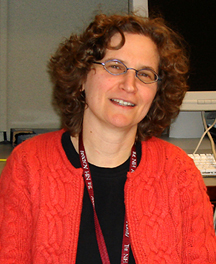| T H E N I H C A T A L Y S T | J U L Y – A U G U S T 2007 |
| | |
Guest Editorial: From the Director, OITE
Postdocs: The Bread and Butter of NIH Research
 |
| Sharon Milgram |
We all know what a great postdoc can do for a lab. Postdocs can bring new perspective and energy to our research programs; they can lead the charge in developing new technologies and establishing new collaborations; they can help maintain a positive lab environment and provide outstanding mentoring for summer students, postbacs, and grad students.
Strong postdocs also can be critical scientific colleagues who help us maintain our focus and strengthen our research programs. As the CC's Patrick Murray describes in a feature article in this edition of The NIH Catalyst, the NIH is "blessed with bright fellows" who indeed enable many of the discoveries here.
The OITE works in collaboration with NIH ICs to oversee the recruitment and training of more than 3,800 postdocs, along with hundreds of graduate students, medical students, clinical fellows, postbacs, and summer interns. These young scientists often advance to be leaders in their chosen fields. Among NIH training alumni are several Nobel Prize winners and dozens of members of the National Academy of Sciences.
That said, identifying postdoc candidates and recruiting the very best of them to our labs is not always easy. Many new Ph.D. graduates have multiple offers and many outstanding opportunities, making postdoc recruitment a frustrating and time-consuming task.
I hope to share with you an NIH-wide plan to improve this system, which is off to a good start, and call upon you to keep the momentum going. In summer 2005, a committee of IC training directors and representatives of the OITE developed a plan to address the challenge of recruiting top postdocs. The committee proposed a two-day festival to the scientific directors that would bring 250 outstanding advanced graduate students to NIH.
In October of 2006, that plan was implemented as the first NIH National Graduate Student Research Festival (NGSRF). With help from former NIH postdocs and current members of FELCOM, we indeed hosted 250 advanced graduate students for two days of science and networking. They were selected from a list of nearly a thousand fine applicants. (See "Graduate Students Showcase Their Research at NIH-and Think about Coming Back for Postdoc Training," The NIH Catalyst, November-December 2006; http://www.nih.gov/catalyst/2006/06.11.01/page4.html.)
Festival participants presented their work at several poster sessions, interviewed with NIH PIs for positions, and toured the Bethesda campus. NGSRF participants also attended sessions on how NIH works, learned about exciting opportunities in the intramural research program, and heard from current postdocs, members of FELCOM, and recent alumni about professional and career development opportunities at NIH. They left not only with a positive impression of NIH in general but also with a better appreciation of the importance of NIH intramural research. It is hoped that the attendees will share their positive impressions with their colleagues at their home institutions, generating even more highly qualified postdoctoral applicants for NIH openings.
The event was highly successful from both sides; many PIs were excited about the quality of the students they had met, and some of the participants are now on campus working as postdocs. Ninety-seven percent of festival attendees who responded to a survey at the end of the event said that they would recommend the festival to a friend, and 71 percent said they were likely or very likely to accept a postdoctoral position at NIH if one were offered.
All participating NIH PIs agreed that this is a cost- and effort-effective way to recruit and interview potential postdoctoral fellows.
Plans are well underway for our second NGSRF, which will take place October 11 and 12. More than 600 applications were received, and we expect to invite up to 250 students to attend the festival. Applicants come from nearly 200 research institutions across the country and express interests ranging from nanotechnology to global public health, from tracking proteins to mapping the brain, and from molecular biology to behavioral studies.
You can help make the coming festival even more successful than last year's. Perhaps some attendee—or attendees, for that matter—would be a great fit with your lab? I encourage you to find out by participating in the festival. Go to the OITE website, http://www.training.nih.gov, and follow the "What's new" link to the NGSRF webpage to post a project and advertise research opportunities in your lab.
There is no need to view this as an official job posting, with all the regulations that that requires. Also, only festival invitees will have access to these postings, We will encourage festival participants to contact you directly to set up a meeting during the festival to discuss science, meet other members of your research group, and learn about opportunities in your lab. Then, come to the festival, meet our guests, and share your enthusiasm for the intramural research program.
See you at the National Graduate Student Research Festival this fall!
-sm